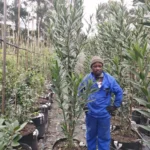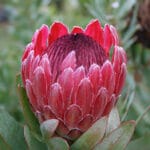Showing 1–12 of 124 resultsSorted by popularity

Buffalo Grass (Stenotaphrum Secundatum) 200 Plug Tray
All Plants, Climbing Plants, Export, Full Sun Plants, Grape Vines, Lawn and Grasses, Medium Plants, Semi Shade Plants, Small PlantsR395.00Add to cartBuffalo Grass (Stenotaphrum Secundatum) 200 Plug Tray

- Sale!

Plectranthus Ecklonii Pink 4lt
Original price was: R95.00.R54.99Current price is: R54.99.Add to cartPlectranthus Ecklonii Pink 4lt
Common Name: Tall Spurflower, Ecklon’s PlectranthusSemi Shade
Shade
Evergreen
Indigenous
Moderate Watering - Sale!

Blueberry Star 20lt
R350.00 – R900.00Select options This product has multiple variants. The options may be chosen on the product pageStar Bluberry Bush 20lt
Full Sun
Semi Shade
Medium WateringWe have an amazing sale on these trees at the moment for bulk buying
Take one bush for R350.00
Take 2 Bushess for R650.00
Take 3 or more bushes R300.00 each - Sale!

Protea Pixi 15cm Pot
Original price was: R350.00.R189.99Current price is: R189.99.Add to cartProtea Pixi 15cm Pot
Full Sun
Afternoon Sun
Low Watering Once Established
Drought Tolerant
Indigenous
Evergreen - Sale!

Vachellia Xanthophloea 20lt
Original price was: R595.00.R399.99Current price is: R399.99.Add to cartVachellia Xanthophloea 20lt
Common Name: Fever tree, Koorsboom, Acacia XanthophloeFull Sun
Medium Watering
Indigenous
Wind TolerantThorn tree that grows up to 12m in height with paper=like bark and a flat spreading crown. They have light yellow flowers in Spring.

Ginkgo Biloba Tree
R525.00 – R750.00Select options This product has multiple variants. The options may be chosen on the product pageGinkgo Biloba Tree
Common Name: Ginkgo, Ginkgo TreeGinkgo biloba, often referred to simply as “ginkgo,” is a unique and ancient tree species known for its distinctive fan-shaped leaves and its medicinal uses. It is the only surviving member of an ancient group of trees that dates back over 200 million years, earning it the nickname “living fossil.”
Appearance
Leaves: The leaves are broad, fan-shaped, and often have a unique forked or divided edge. They are bright green in the spring and summer and turn a vibrant yellow in the fall.
Size: Ginkgo trees can grow quite large, reaching up to 100 feet (30 meters) tall, although cultivated varieties are often smaller.
Bark: The tree’s bark is grayish-brown and is often considered quite resilient, resistant to pollution, and fungal diseases.
Flowers: Ginkgo is dioecious, meaning there are male and female trees. Male trees produce small, inconspicuous pollen cones, while female trees bear ovules that eventually produce seeds, which are encased in a fleshy, fruit-like structure.Habitat
Ginkgo trees are native to China, but they are now cultivated in many parts of the world due to their hardiness and resistance to pests and diseases.
They are well-suited for urban environments, thriving in areas with air pollution and poor soil.Medicinal Uses
Leaf Extract: The leaves of the Ginkgo biloba tree are commonly used in herbal medicine. Ginkgo extract is believed to improve cognitive function, memory, and circulation, though scientific studies have shown mixed results. It is often marketed as a supplement for improving mental clarity and alleviating symptoms of dementia, anxiety, and depression.
Antioxidant Properties: Ginkgo is known for its antioxidant content, which may help protect cells from damage.
Circulatory Benefits: Some studies suggest that ginkgo may improve blood flow and help with issues like cold hands and feet or varicose veins.Cultural Significance
The Ginkgo biloba is revered in many cultures, especially in Asia, where it symbolizes longevity and resilience.
It is often planted in temples and sacred areas because of its long life span and ability to survive in adverse conditions.Toxicity of Fruit
While the leaves are often used for medicinal purposes, the fruit (the fleshy seed coating) of the female Ginkgo tree can be toxic if consumed in large quantities. It contains compounds that may cause skin irritation and gastrointestinal distress, though the seed inside is typically safe when properly prepared.
Growth and Care
Ginkgo trees are hardy and tolerant of a variety of soils, but they prefer well-drained, slightly acidic soil.
They can tolerate full sun or partial shade and are drought-tolerant once established.
Ginkgo trees are relatively low-maintenance and have few pest problems, making them excellent for ornamental landscaping in cities.- Sale!

Lavendula Stoechas Pink Flower 10lt
All Plants, Export, Full Sun Plants, Hedging Plants, Medium Plants, Semi Shade Plants, Water Wise PlantsOriginal price was: R325.00.R199.99Current price is: R199.99.Add to cartLavendula Stoechas Pink Flower 10lt
Common Name: Spanish Lavender pink flower
Full SunSemi Shade
Low watering
Wind tolerant
Evergreen
Shrub growing to about 80cm tall with grey-green leaves and fascinating pink flowers. - Sale!

Blueberry Misty 20lt
R350.00 – R900.00Select options This product has multiple variants. The options may be chosen on the product pageBlueberry Misty 20lt
Full Sun
Semi Shade
Medium WateringWe have an amazing sale on these trees at the moment for bulk buying
Take one bush for R350.00
Take 2 Bushess for R650.00
Take 3 or more bushes R300.00 each - Sale!

Protea Sharonet 15cm Pot
All Plants, Export, Full Sun Plants, Indigenous Plants, Protea Plants, Small Plants, Water Wise PlantsOriginal price was: R350.00.R189.99Current price is: R189.99.Add to cartProtea Sharonet 15cm Pot
Full Sun
Waterwise
Evergreen
Drought Tolerant
Low Watering
Indigenous - Sale!

Erica Regia 15cm Pot
Original price was: R165.00.R139.99Current price is: R139.99.Add to cartErica Regia 15cm Pot
Full Sun
Semi Shade
Water Wise
Evergreen
Indigenous










